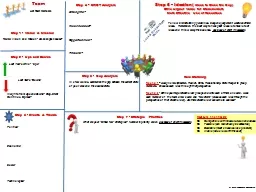PPT-Team members:
Author : tatyana-admore | Published Date : 2016-06-22
James Ang Andrew Loh Woo Yu Xuen Investigating the use of steam pretreatment on cellulosic waste for bioethanol production Content Background Rationale Hypothesis
Presentation Embed Code
Download Presentation
Download Presentation The PPT/PDF document "Team members:" is the property of its rightful owner. Permission is granted to download and print the materials on this website for personal, non-commercial use only, and to display it on your personal computer provided you do not modify the materials and that you retain all copyright notices contained in the materials. By downloading content from our website, you accept the terms of this agreement.
Team members:: Transcript
Download Rules Of Document
"Team members:"The content belongs to its owner. You may download and print it for personal use, without modification, and keep all copyright notices. By downloading, you agree to these terms.
Related Documents














